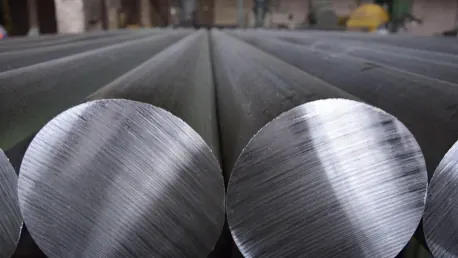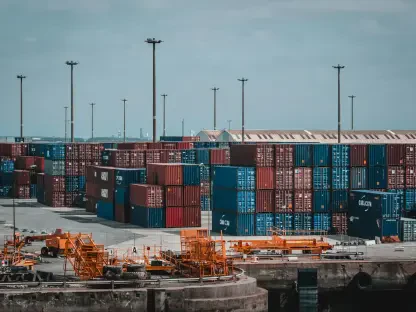In March 2018, former President Donald Trump introduced tariffs on steel and aluminum imports in a decisive bid to revive American manufacturing and reduce reliance on foreign producers. These tariffs had significant repercussions on various fronts, impacting the broader economy and geopolitical landscape. While the primary aim was to bolster domestic production and protect American jobs, the measures could also lead to job losses and increased costs for consumers and industries that depend on these essential materials.
The Importance of Steel and Aluminum
Steel: The Backbone of Infrastructure
Steel, with its critical role in construction and manufacturing, is indispensable in modern economies. This alloy of iron and carbon is vital for constructing buildings, bridges, and numerous other structures. Beyond its use in construction, steel serves as a fundamental component in the manufacturing of a wide array of products. Given its significance, ensuring a steady supply of steel is crucial for maintaining infrastructure and supporting industrial activities.
However, the United States is not self-sufficient in steel production, relying on imports to meet slightly over 10% of domestic demand. This dependency exposes the economy to potential vulnerabilities, like supply disruptions or price volatility caused by global market fluctuations. By introducing tariffs on steel imports, the Trump administration aimed to incentivize domestic production, thereby reducing this dependency and bolstering the domestic steel industry. Although the intention was clear, the reality of achieving self-sufficiency in such a vital material posed significant challenges.
Aluminum: A Versatile Metal
Aluminum is another critical material with wide-ranging applications across various industries. Known for its lightweight yet strong properties, aluminum is essential in the aviation, automotive, and electrical sectors. The versatile nature of aluminum makes it indispensable for modern technological advancements, contributing significantly to the country’s innovative capabilities. Despite its importance, the United States is highly dependent on foreign imports to meet its aluminum demand, with a net import reliance ratio of approximately 50%.
This substantial level of dependence raises concerns about the stability of supply chains and the potential risks posed by geopolitical tensions or trade disruptions. The imposition of tariffs on aluminum aims to encourage domestic production and reduce this reliance on foreign sources. However, achieving this goal is fraught with complexities, as increasing local production capacity is not an overnight process. The need to balance domestic production capabilities with the vital imports that sustain various high-tech sectors underscores the intricate nature of trade and economic policies.
Economic Consequences of Tariffs
Price Increases and Consumer Impact
One of the most immediate economic consequences of tariffs is the rise in prices for imported goods. Acting as a tax on these imports, tariffs invariably increase the costs of critical materials like aluminum and steel. These cost hikes filter through the production chain, influencing everything from the price of airplane wings to steel rivets. Consequently, industries reliant on these materials face higher production costs, which are often passed down to consumers in the form of increased prices.
Consumers, bearing the brunt of these price hikes, may alter their spending habits, potentially affecting economic growth. Furthermore, some industries may struggle to absorb these additional costs, leading to financial challenges and potential job losses. Ironically, the sectors that tariffs aim to protect could experience turmoil as businesses grapple with the increased costs of raw materials. Economic theory supports the notion that protectionist measures introduce inefficiencies and disrupt market dynamics, potentially leading to unintended negative consequences for the broader economy.
Historical Precedents and Economic Theory
The economic considerations surrounding tariffs are significant, but they are not the sole factors influencing such policies. Historical precedents reveal numerous instances where countries have pursued seemingly illogical economic policies to attain specific objectives like enhancing national self-reliance or protecting jobs in declining industries. However, these goals often come at a steep cost. Implementing tariffs does not yield immediate results; instead, it typically results in short-term inflation and substantial price increases.
Past experiences show that protectionist measures can have far-reaching and sometimes adverse effects on the economy. While the motivation behind tariffs may be to boost domestic production and safeguard local industries, the transition period can be tumultuous. Inflationary pressures, coupled with increased production costs, challenge the effectiveness of these measures. It is essential to recognize that while economic logic may dictate certain outcomes, the broader geopolitical and social objectives driving these policies must also be considered.
Geopolitical Dynamics
The Role of China
China’s influence in the global steel and aluminum markets is a critical component of the broader geopolitical dynamics surrounding Trump’s tariffs. Over the years, China has flooded global markets with cheap exports of these materials, often pricing them below production costs in other regions, including Europe. Factors like high European energy costs and significant subsidies from the Chinese government to its producers have contributed to this phenomenon. This situation has prompted numerous cases at the World Trade Organization (WTO), highlighting global concerns about China’s trade practices.
The impact of China’s trade maneuvers extends beyond economics. It has geopolitical implications, as countries worldwide grapple with the consequences of these practices. The influx of cheap Chinese steel and aluminum disrupts market equilibrium, posing challenges for producers in other regions. The introduction of tariffs by the United States reflects a strategic move to counter these disruptions and assert control over domestic industries. However, the complexity of the global trade landscape means that such measures can have ripple effects, impacting international relations and trade agreements.
North American Trade Relations
While it is crucial to recognize the influence of cheap Chinese steel and aluminum on global markets, it is equally important to acknowledge the nuances of North American trade relations. Contrary to common perceptions, the United States imports significantly less steel and aluminum from China than one might expect. For instance, Canada is the primary source of aluminum imports for the United States. This fact underscores the interconnectedness of North American economies and the potential complexities arising from imposing tariffs on these imports.
Introducing tariffs on aluminum imports from Canada and other North American partners could strain economic relationships within the region. The economic integration of the United States, Canada, and Mexico under frameworks like the United States-Mexico-Canada Agreement (USMCA) highlights the significance of maintaining stable trade relations. Disrupting these established relationships through tariffs can lead to unintended economic consequences, affecting industries and economies on both sides of the border. The delicate balance of trade policies and international diplomacy underscores the need for carefully considered strategies in addressing trade imbalances and protecting domestic industries.
Implementation and Uncertainties
Structure and Implementation of Tariffs
The structure and implementation of tariffs play a pivotal role in determining their effectiveness and consequences. As seen with previous tariff threats on Canada and Mexico, these measures introduce numerous uncertainties and raise critical questions. The potential for tariffs to disrupt existing economic relationships and create unintended consequences is high, necessitating thorough evaluation and strategic planning. The intricate nature of international trade requires that tariffs be precisely targeted and executed to achieve desired outcomes without causing undue harm.
The experience of implementing tariffs reveals that the process is far from straightforward. Each step, from the initial announcement to enforcement, must be carefully navigated to minimize disruptions. The complexities involved in designing effective tariffs extend beyond economic considerations to encompass geopolitical, legal, and market dynamics. Crafting policies that align with broader national objectives while maintaining stability in the global trade environment requires meticulous attention to detail and strategic foresight.
Domestic Production Response
The intention behind Trump’s tariffs on steel and aluminum was clear: to rejuvenate American manufacturing and lessen dependence on foreign suppliers. However, while they were designed to protect American jobs and industries, these measures brought some unintended consequences. Manufacturers that use these materials in their products could see increased production costs, which might be passed on to consumers in the form of higher prices. Additionally, the move led to retaliatory tariffs from other countries, further complicating international trade relations and potentially hurting American exports. In this complex scenario, the tariffs acted as a double-edged sword, aimed at boosting the economy but with the risk of creating new economic challenges.









